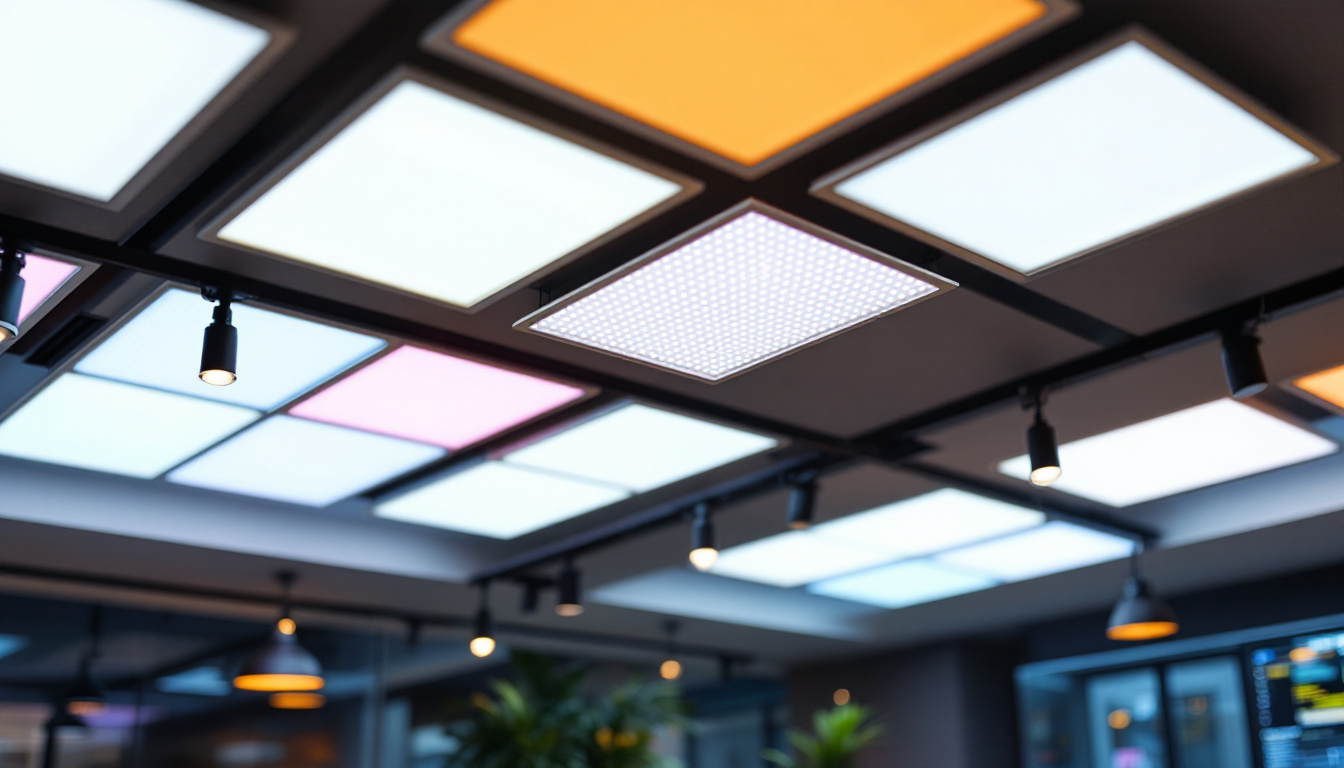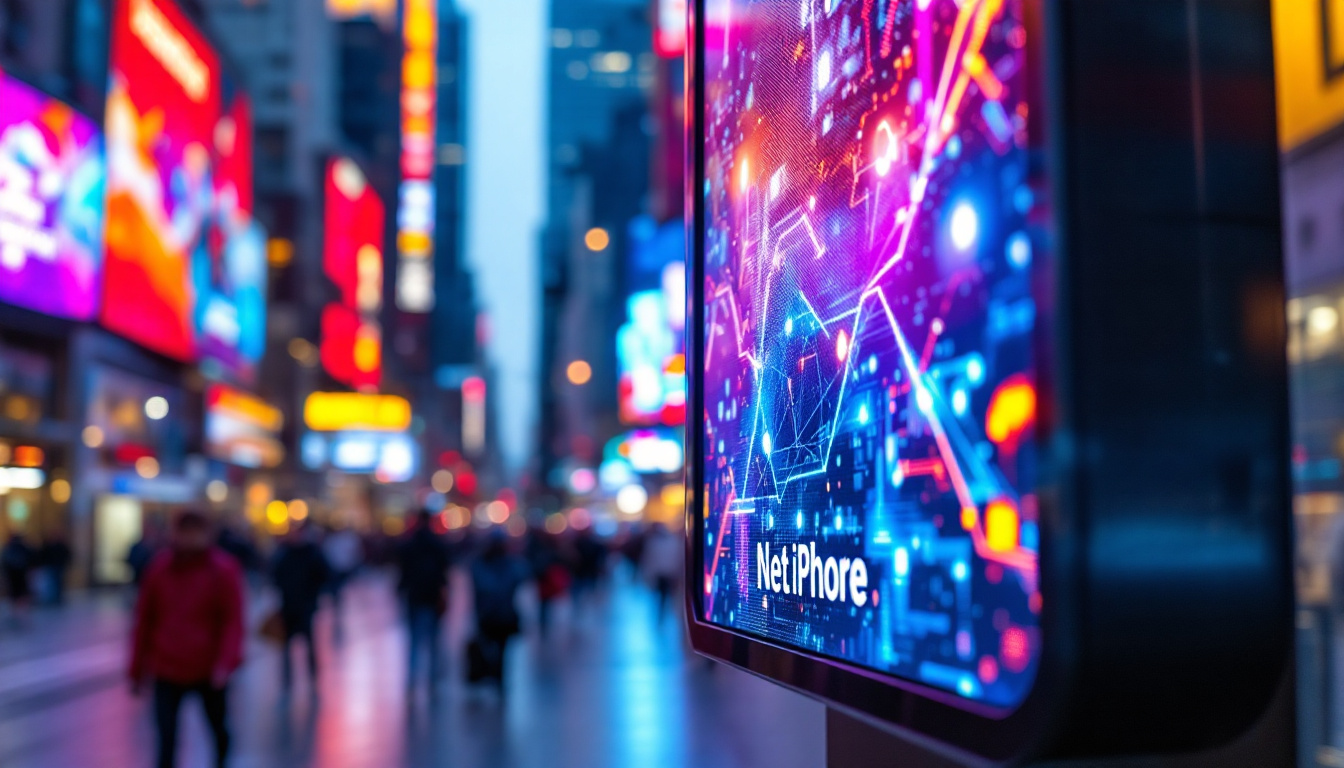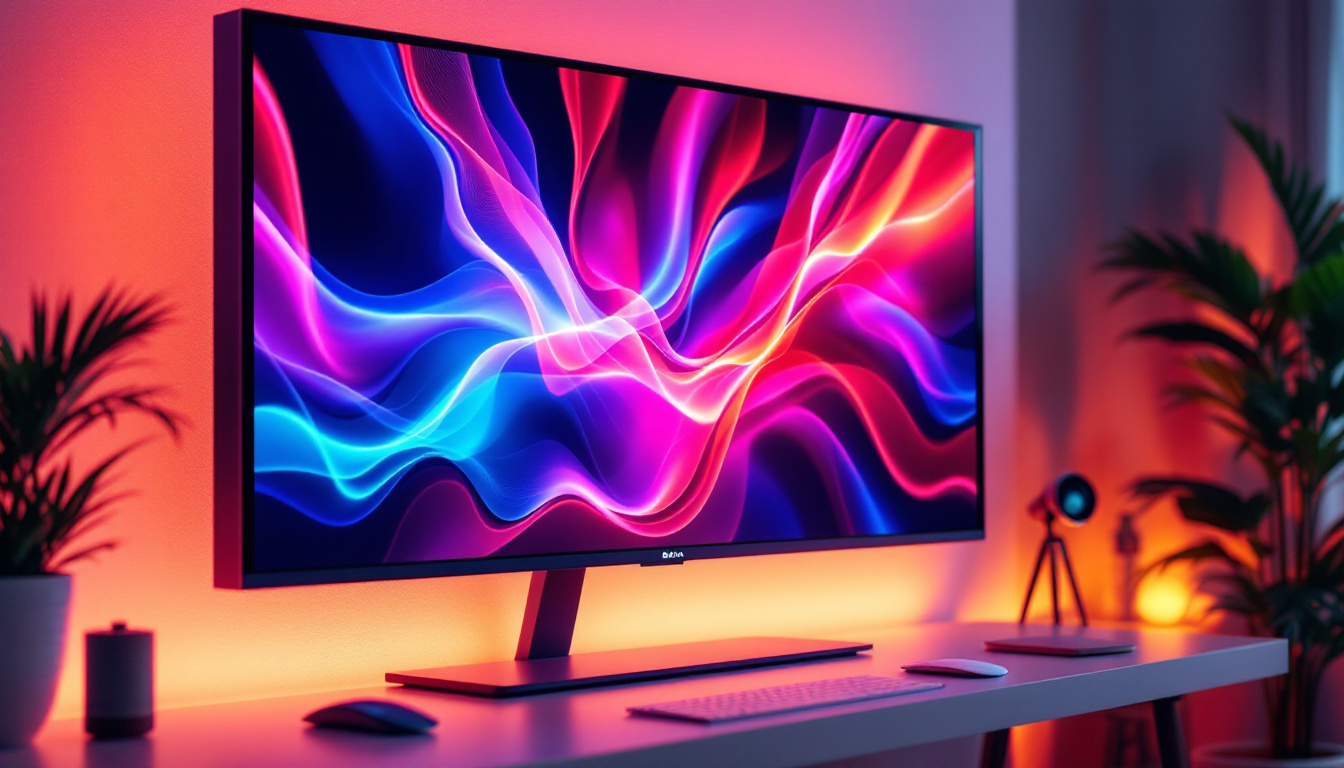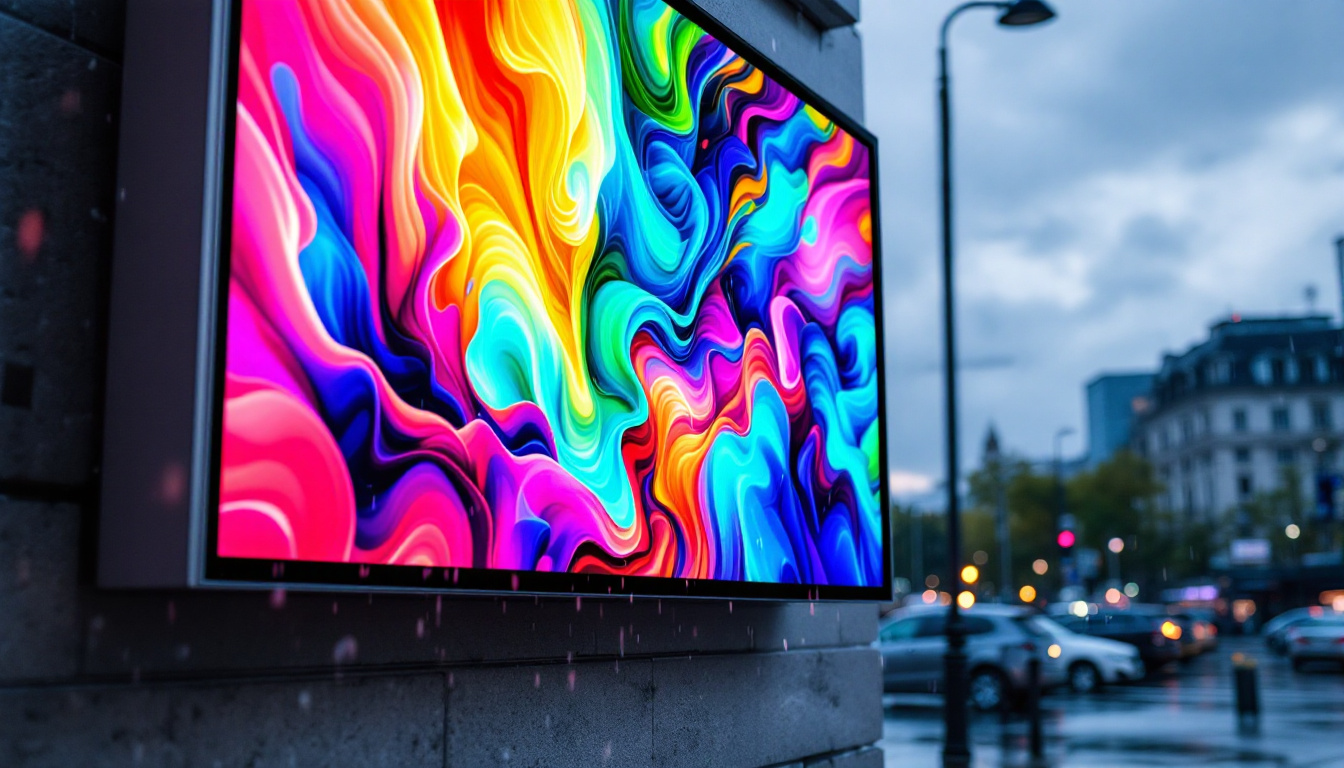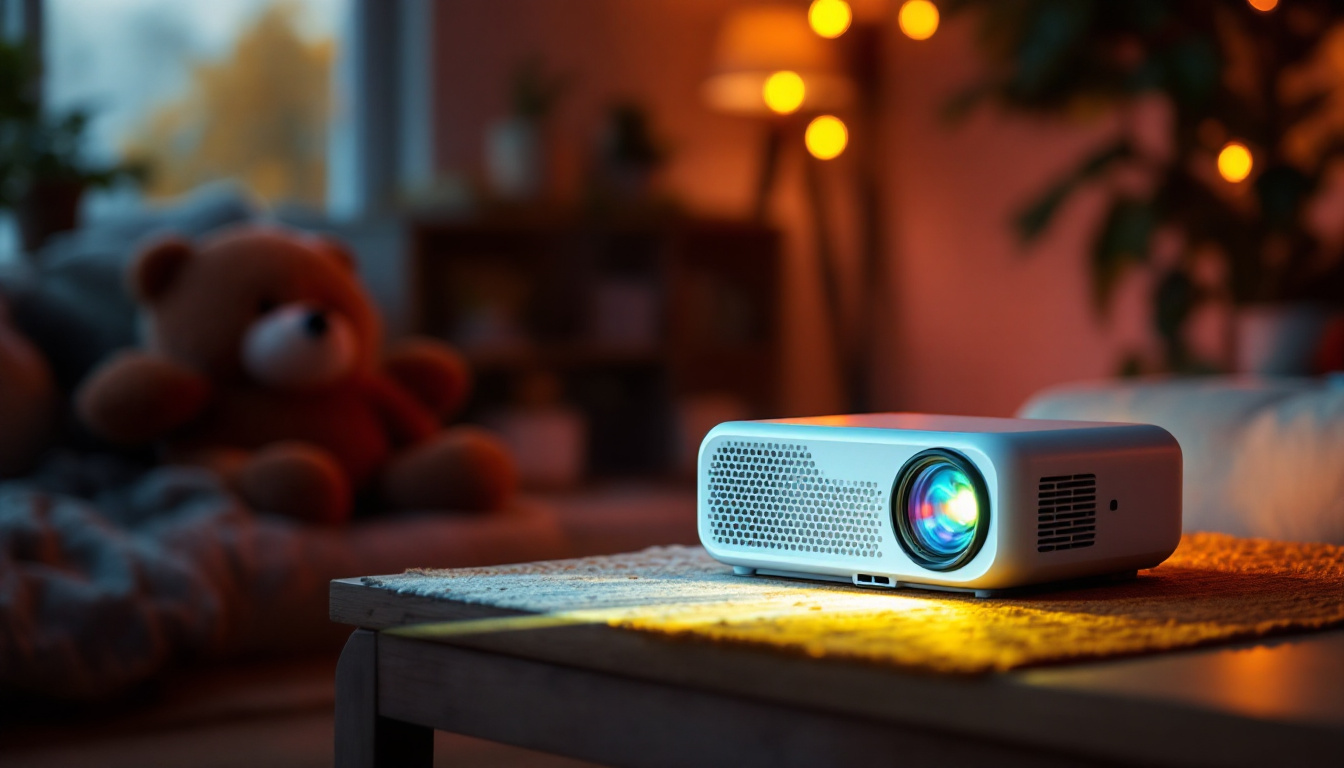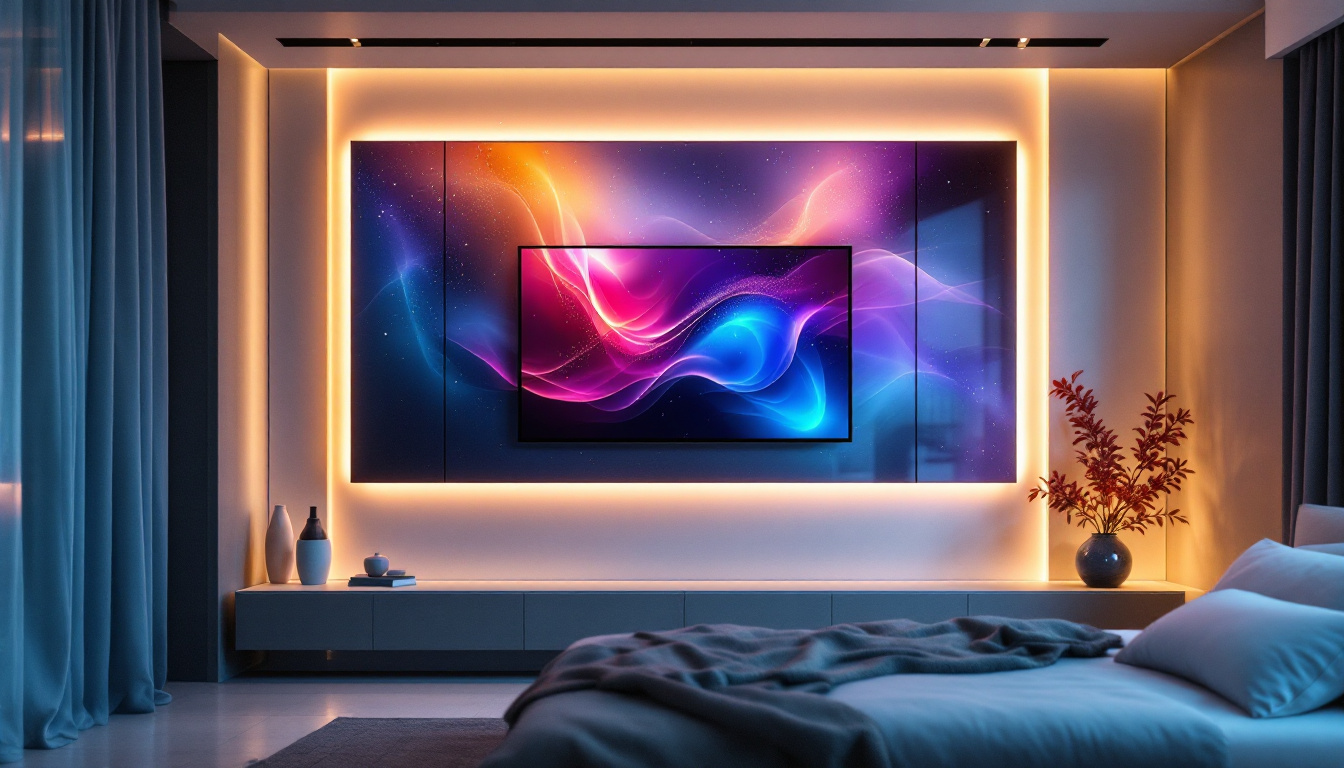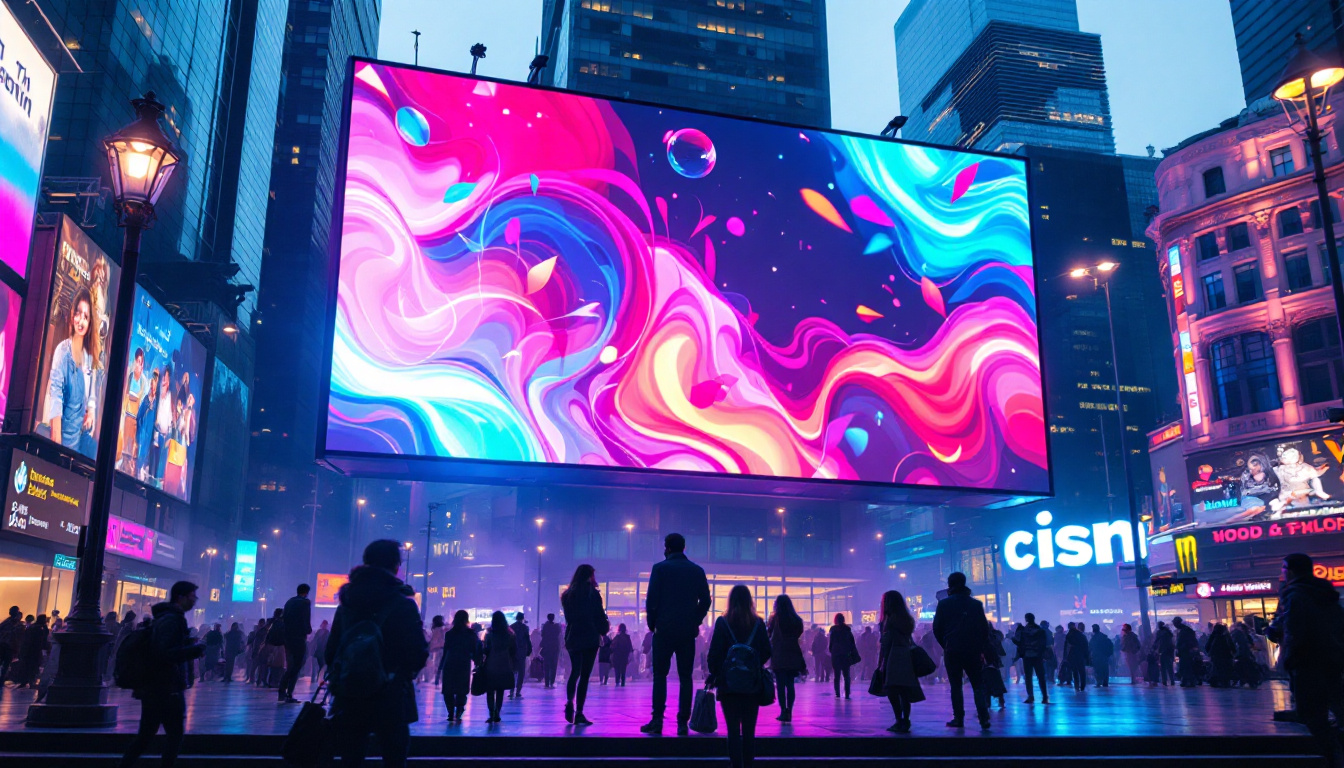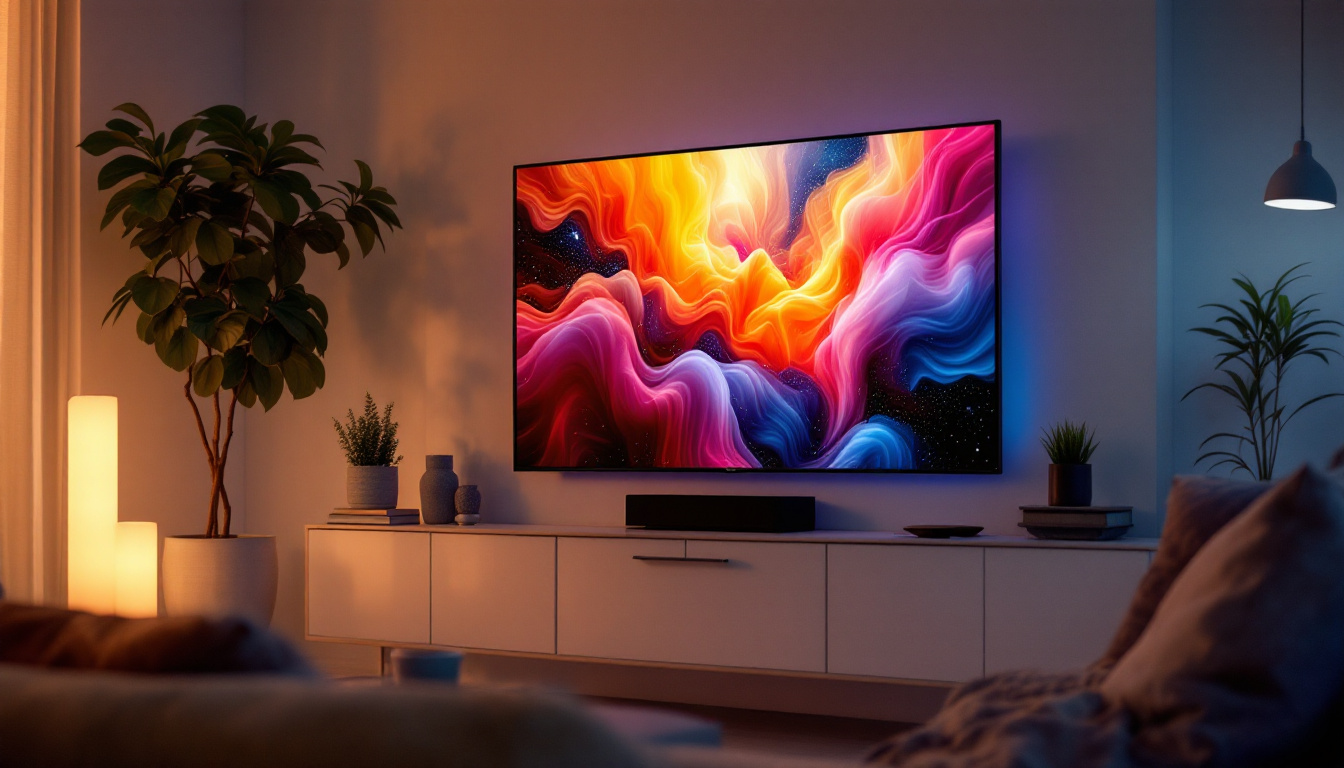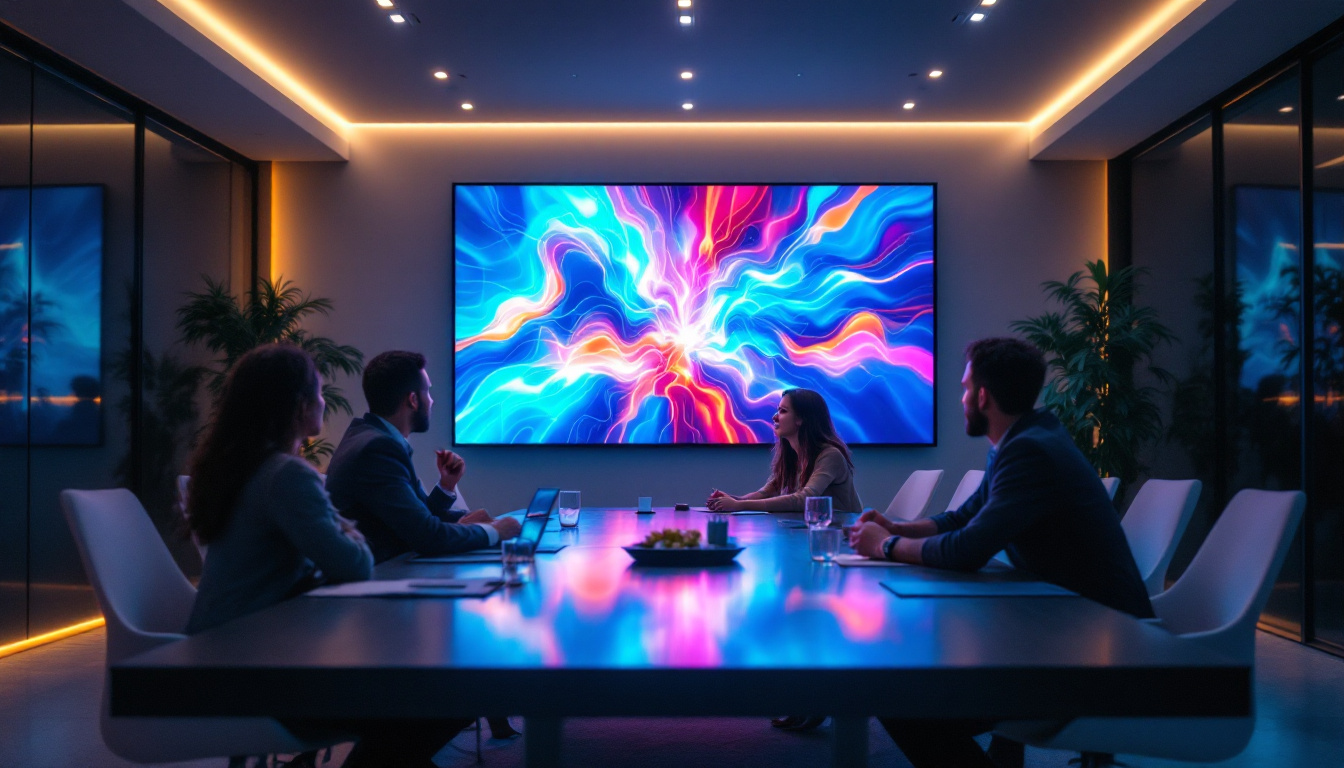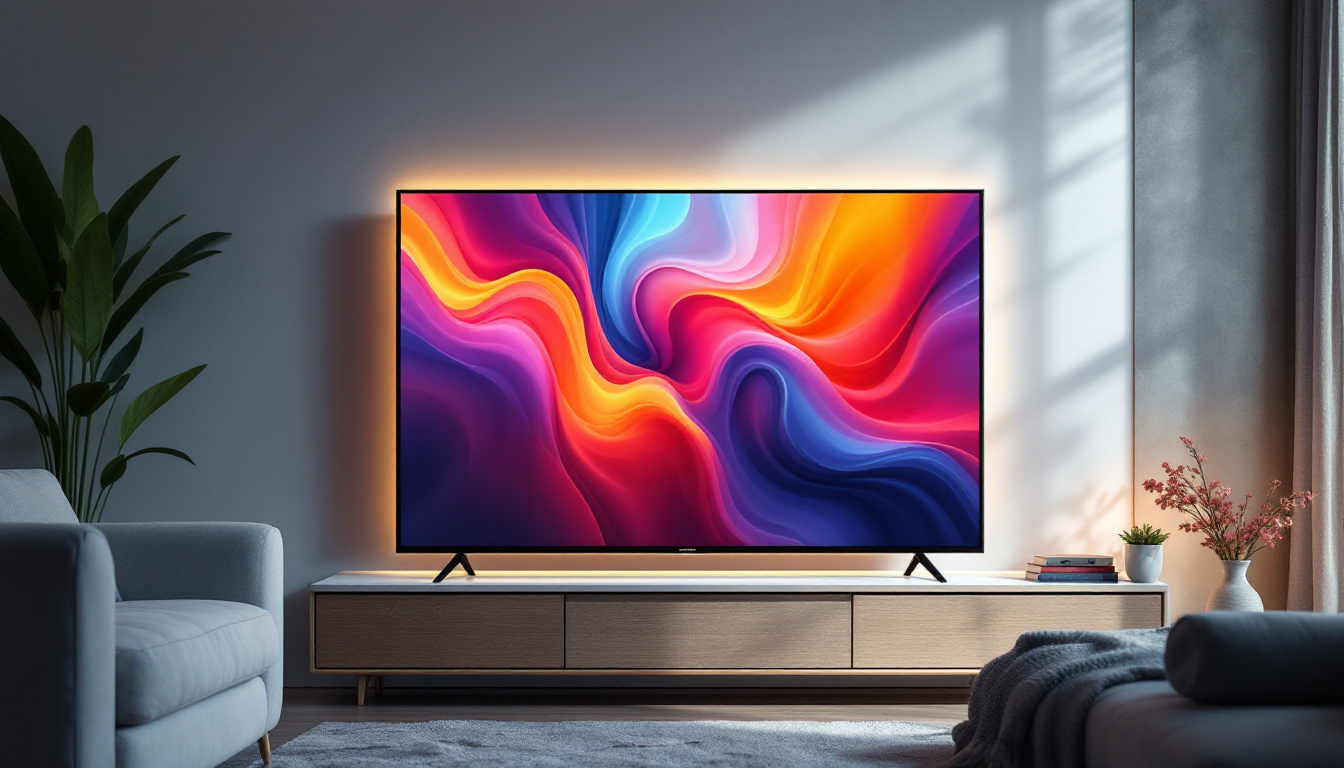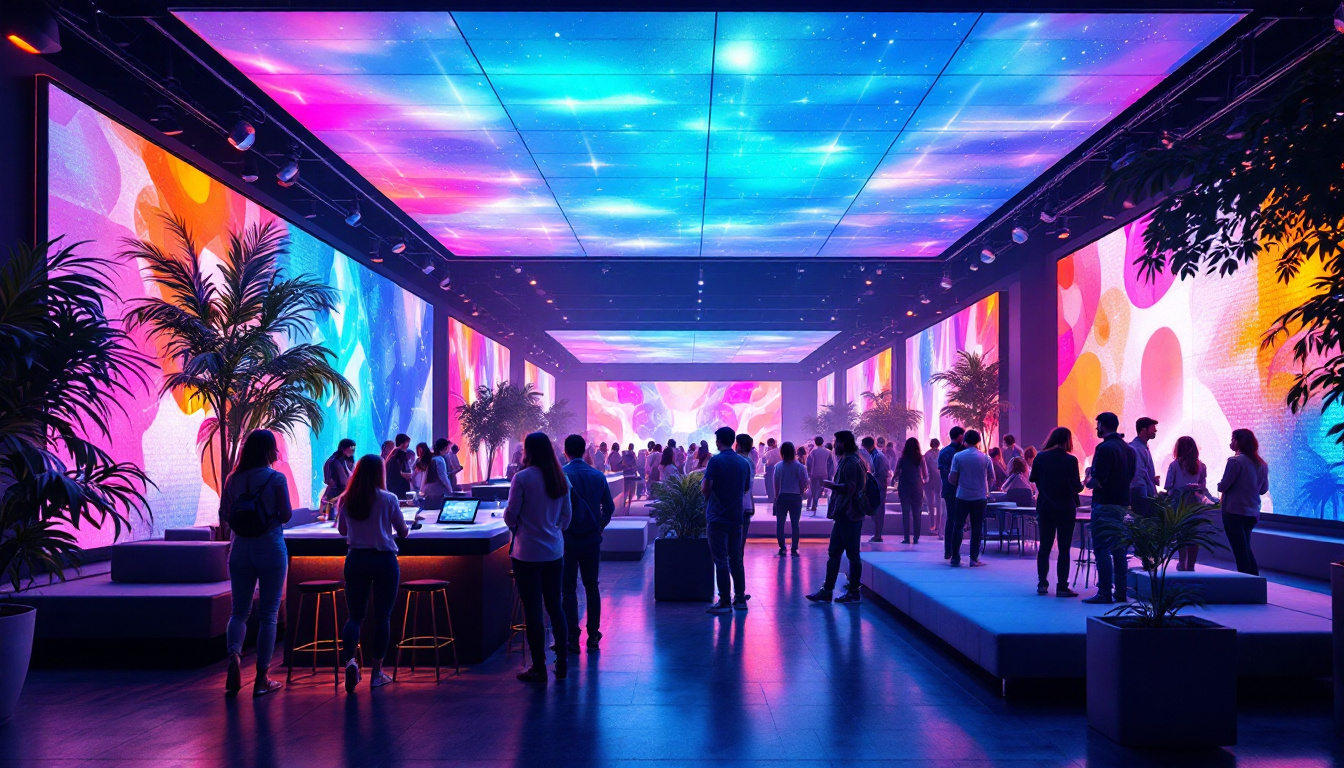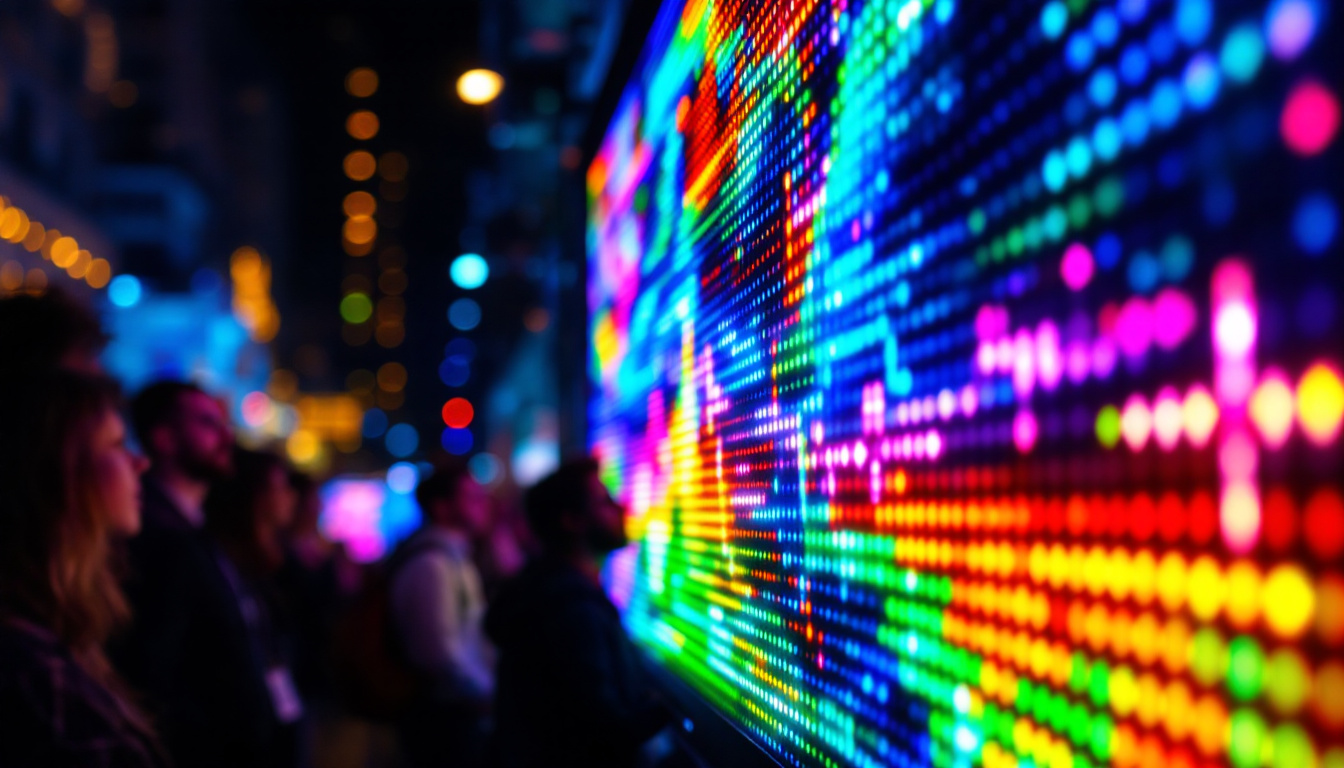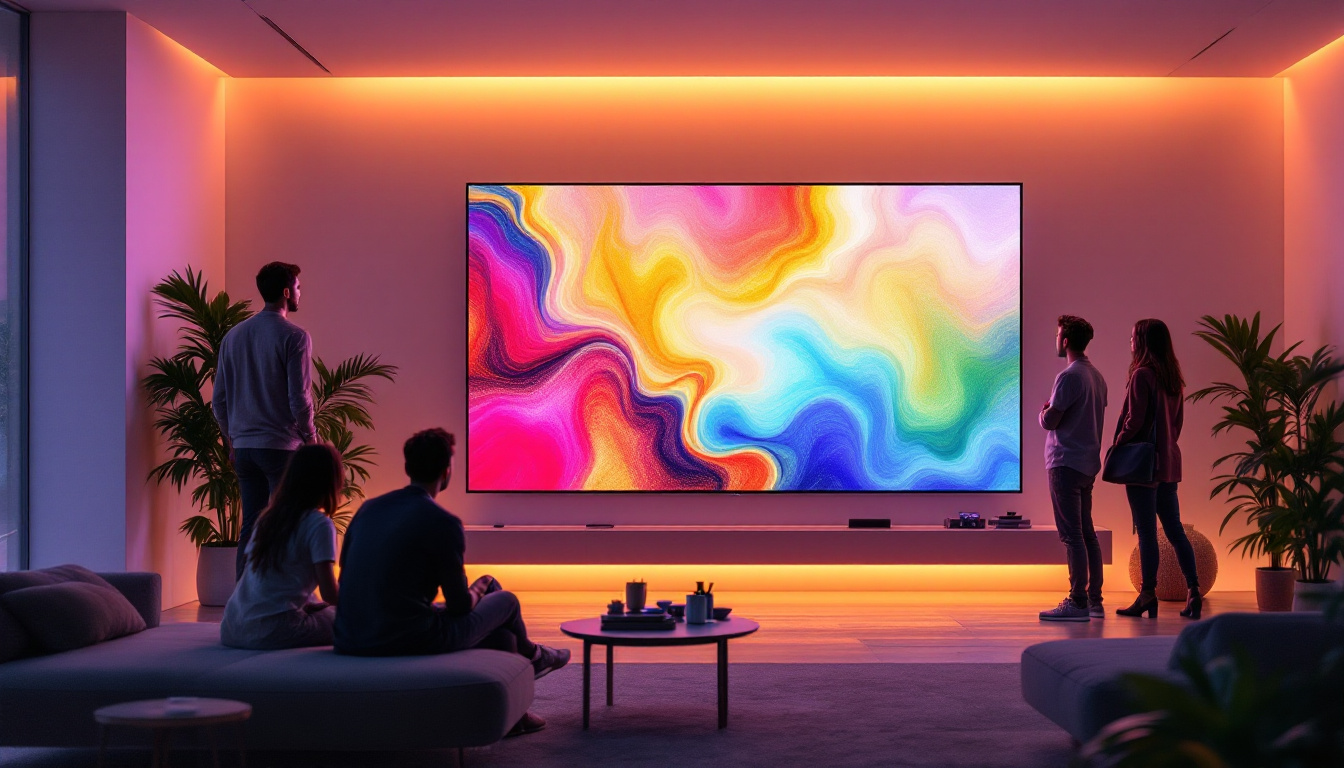In the modern world of interior design and commercial spaces, the integration of technology and aesthetics has become paramount. One of the most innovative solutions that have emerged in recent years is the use of 2×2 ceiling tiles equipped with LED displays. These tiles not only enhance the visual appeal of a space but also provide functional benefits, making them a popular choice for various applications. This article delves into the intricacies of 2×2 ceiling tiles with LED displays, exploring their features, benefits, installation processes, and applications.
Understanding 2X2 Ceiling Tiles
Before diving into the specifics of LED displays, it is essential to understand what 2×2 ceiling tiles are and their traditional uses. Typically, these tiles measure 2 feet by 2 feet and are commonly used in drop ceilings or suspended ceilings. They are made from a variety of materials, including mineral fiber, metal, and fiberglass, and are designed to fit into a grid system installed in commercial and residential spaces. This modular design not only facilitates easy installation but also allows for quick access to plumbing, electrical wiring, and HVAC systems hidden above the ceiling.
Common Materials Used
The materials used for 2×2 ceiling tiles can significantly affect their performance and aesthetic appeal. Mineral fiber tiles are popular for their sound absorption properties and affordability. They are often treated with a special coating to enhance durability and resistance to stains. Metal tiles, on the other hand, offer a sleek, modern look and are often used in high-end commercial spaces. These tiles can be finished in various colors and textures, allowing for creative design possibilities. Fiberglass tiles are lightweight, durable, and resistant to moisture, making them suitable for areas prone to humidity, such as bathrooms and kitchens. Additionally, some fiberglass tiles come with integrated lighting options, further enhancing their functionality.
Traditional Applications
Traditionally, 2×2 ceiling tiles have been used in offices, schools, hospitals, and retail environments. They serve multiple purposes, including sound insulation, thermal regulation, and aesthetic enhancement. The grid system allows for easy installation and maintenance, making them a practical choice for many building types. In educational settings, for instance, the acoustic properties of mineral fiber tiles can help create a conducive learning environment by minimizing noise distractions. In healthcare facilities, the use of tiles with antimicrobial properties can contribute to a cleaner, safer atmosphere for patients and staff alike. Furthermore, these tiles can be painted or customized to match the interior design, making them versatile for various applications.
The Rise of LED Displays in Ceiling Tiles
With the advancement of technology, the integration of LED displays into ceiling tiles has revolutionized the way spaces are designed and utilized. These innovative tiles combine the functionality of traditional ceiling tiles with the dynamic capabilities of digital displays, offering a unique solution for modern environments.
What Are LED Ceiling Tiles?
LED ceiling tiles are essentially 2×2 ceiling tiles that incorporate LED technology to create a digital display surface. These tiles can display a wide range of content, from advertisements and announcements to artistic visuals and information. The integration of LED technology into ceiling tiles allows for seamless installation and a clean aesthetic, as the displays are flush with the ceiling. Moreover, these tiles can be interconnected to form larger displays, enabling the creation of immersive environments that can transform the mood of a room.
Advantages of LED Ceiling Tiles
The benefits of using LED ceiling tiles are numerous. Firstly, they provide a versatile platform for communication and branding. Businesses can easily update content to reflect current promotions or important messages, ensuring that the information is always relevant. Secondly, LED displays can enhance the ambiance of a space, creating an engaging environment for employees and customers alike. Additionally, these tiles are energy-efficient, consuming less power than traditional lighting solutions, which not only reduces operational costs but also aligns with sustainability goals. The ability to control brightness and color temperature further allows for customization that can adapt to different times of day or specific events, making them a flexible choice for various settings.
Furthermore, LED ceiling tiles contribute to improved acoustics in a space. Many of these tiles are designed with sound-absorbing materials, which can help reduce noise levels in busy environments like offices, schools, and hospitals. This dual functionality of providing visual stimulation while also enhancing sound quality makes LED ceiling tiles an attractive option for architects and designers looking to create multifaceted spaces. As the technology continues to evolve, we can expect even more innovative applications, such as integrating sensors for interactive displays that respond to the presence of individuals, further blurring the lines between physical and digital environments.
Installation Process for LED Ceiling Tiles
Installing LED ceiling tiles requires careful planning and execution. While the process can be straightforward, it is essential to follow specific steps to ensure optimal performance and safety.
Preparation and Planning
Before installation, it is crucial to assess the space and determine the layout of the ceiling tiles. This involves measuring the area, considering the placement of existing lighting, and ensuring that the electrical infrastructure can support the LED tiles. It may also be necessary to consult with a professional to ensure compliance with local building codes.
Installation Steps
The installation process typically involves the following steps:
- Remove Existing Tiles: If replacing traditional tiles, carefully remove them from the grid system.
- Install Electrical Wiring: Ensure that the necessary wiring is in place to power the LED tiles. This may require the assistance of a licensed electrician.
- Place LED Tiles: Align the LED ceiling tiles with the grid system and secure them in place, ensuring that they are flush with the ceiling.
- Connect Power Supply: Connect the tiles to the power supply, following the manufacturer’s instructions for safety and functionality.
- Test the System: Once installed, test the LED tiles to ensure they are functioning correctly and displaying the intended content.
Content Management for LED Displays
One of the key features of LED ceiling tiles is their ability to display dynamic content. However, managing this content effectively is crucial for maximizing the benefits of the system.
Content Management Systems (CMS)
Most LED ceiling tiles are compatible with content management systems that allow users to create, schedule, and manage the content displayed on the tiles. These systems can be accessed via web-based platforms or dedicated software, providing flexibility and ease of use.
Types of Content to Display
The possibilities for content are virtually limitless. Businesses can display promotional videos, real-time information such as flight schedules or news updates, and even artistic visuals that enhance the overall atmosphere of the space. Interactive content can also be integrated, allowing for engaging user experiences.
Applications of LED Ceiling Tiles
The versatility of LED ceiling tiles makes them suitable for a wide range of applications across various industries. Their unique ability to blend technology with design opens up new possibilities for enhancing spaces.
Commercial Spaces
In commercial environments, LED ceiling tiles can be used to create eye-catching displays that attract customers and convey brand messages. Retail stores can utilize these tiles to showcase products, while restaurants can display menus or promotional offers. The dynamic nature of the displays allows businesses to adapt their messaging quickly, keeping content fresh and engaging.
Corporate Offices
In corporate settings, LED ceiling tiles can enhance communication and collaboration. They can be used in conference rooms to display presentations or video calls, ensuring that all participants have a clear view. Additionally, common areas can utilize these displays to share company news, events, or motivational content, fostering a sense of community among employees.
Healthcare Facilities
In healthcare settings, LED ceiling tiles can play a vital role in patient experience. They can be used to display calming visuals in waiting areas or provide important information in treatment rooms. The ability to update content easily allows healthcare providers to share relevant information with patients and visitors, improving communication and comfort.
Considerations for Choosing LED Ceiling Tiles
When selecting LED ceiling tiles for a specific application, several factors should be taken into account to ensure the best fit for the intended environment.
Brightness and Resolution
The brightness and resolution of LED tiles are critical factors that determine their effectiveness. high-resolution tiles provide clearer images and text, making them suitable for detailed content. Brightness levels should also be considered, especially in spaces with varying lighting conditions. Ensuring that the tiles are visible in both bright and dim environments is essential for optimal performance.
Energy Efficiency
Energy efficiency is another important consideration. LED technology is known for its low energy consumption compared to traditional lighting solutions. However, it is still essential to assess the specific energy requirements of the chosen tiles to ensure they align with sustainability goals and budget constraints.
Future Trends in LED Ceiling Tiles
The integration of technology in interior design is continuously evolving, and LED ceiling tiles are no exception. As advancements in technology continue, several trends are expected to shape the future of LED ceiling tiles.
Smart Integration
One of the most significant trends is the integration of smart technology. Future LED ceiling tiles may incorporate sensors and IoT capabilities, allowing for automated content management based on environmental factors such as occupancy or time of day. This smart integration can enhance energy efficiency and user experience.
Customization and Personalization
As demand for unique and personalized spaces grows, customization options for LED ceiling tiles are likely to expand. Businesses may have the ability to design custom graphics or animations that align with their branding, creating a more cohesive and engaging environment.
Conclusion
2×2 ceiling tiles with LED displays represent a significant advancement in the intersection of technology and interior design. Their ability to provide dynamic content in a visually appealing format makes them an invaluable asset for various applications, from commercial spaces to healthcare facilities. As technology continues to evolve, the potential for LED ceiling tiles will only expand, offering even more innovative solutions for enhancing environments. Whether for branding, communication, or ambiance, LED ceiling tiles are poised to play a crucial role in the future of interior design.
Discover the Future of LED Ceiling Tiles with LumenMatrix
Ready to elevate your space with the latest in LED display technology? LumenMatrix is at the forefront of creating immersive and dynamic environments through innovative LED solutions. From captivating Indoor LED Wall Displays to versatile Custom LED Displays, our products are designed to transform your commercial or healthcare facility into a modern, engaging, and visually stunning space. Experience the revolution in visual communication and let LumenMatrix help you make a lasting impression. Check out LumenMatrix LED Display Solutions today and step into the future of interior design.

